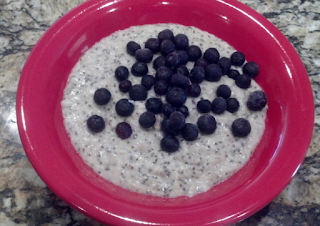MICROGREENS
Note: This is a guest post by
www.sproutshop.net on how to grow microgreens.
Picture courtesy of Sunset Magazine
Microgreens
are a relatively recent addition to the produce aisle. These tiny seedlings are
harvested when the first true leaves appear (after the cotyledon or seed leaf
stage). They are a specialty crop which many chefs like to use to garnish their
dishes or add to salads. Microgreens add color, flavor and texture to any dish.
In addition, they are a nutrient dense food, meaning that they provide a
significant amount of nutrients compared to the calories in the food. According
to the University of Florida IFAS Extension, Sprouts, microgreens and baby
greens are simply greens harvested and consumed in an immature state.
·
Sprouts the
youngest/smallest, are germinated seed which is sprouted, and are consumed
whole. Are ready to eat in 2-6 days after soaking.
·
Microgreens slightly
older/larger (about 2-3” tall). Are ready to eat within a week of planting.
Some varieties take longer. They are cut at the soil level at harvest.
·
Baby Greens or Petite
Greens
the oldest/largest (3-4” tall). Are usually ready to eat in 1-2 weeks. They are
cut at the soil level at harvest.
Growing
microgreens or baby greens can be grown in a garden, or on a kitchen counter or
covered patio table (weather permitting). This is a great way to have a year
round garden!
Here’s
what you’ll need to grow microgreens:
·
Seedling Trays, recycled plastic
trays or short pots
Seedling trays are best, but there is nothing
wrong with using plastic trays that used to contain some sort of produce you
bought. These don’t need to have holes in the bottom, as long as you don’t
over water.
·
Organic potting mix, vermiculite and
worm castings
Using organic potting mix is best. It doesn’t
hurt to add some vermiculite to the mix, as it makes for better soil drainage.
Some growers swear by adding worm castings to the mix. You can purchase these
from garden centers.
·
Spray Water Bottle or
water bottle with small pull up spout
Spray your seeds to keep moist until they
sprout, and keep emerging plants from drying out while growing.
How to start your
microgreens:
1. Fill seed tray with good quality, nutrient rich potting
soil. Lightly compact soil (using a tamping device or the back of a spoon) to
create an even surface. Do not compact
the soil or you will not get good growing results
2. TIP: Be sure not to overfill the soil or you will have a mess
on your hands when you water. Leave ½” space from the soil line to the top of
your container.
3. Add seeds. Sprinkle high quality seeds over your soil,
evenly. You can plant densely, or sparsely, depending on your preference.
4. Press the seeds lightly into the soil without
pressing them under the soil. Use a tamping tool or the back of a spoon. This
will help the seeds to set roots.
5. Cover the seeds with soil or paper towel. Soil is best for
large seeds. Sprinkle soil over the seeds to keep them covered and moist after
watering. For small seeds, use the paper towel by gently placing towel over the
entire surface.
6. Water. Use plenty of water but apply it in a gentle way to not
disrupt the seeds. The seeds should not be in standing water, but should be
moist.
7. Cover Tray using the clear plastic dome that comes with
your tray. It will keep your seeds warm and moist; kind of like a mini
greenhouse!
8. Germinate seeds by keeping soil/paper towel covering
seeds moist. Seeds will push up the towel or soil. You can remove the paper
towel once the seeds begin to push up the towel. Consider using a spray bottle to mist the
seeds/soil at this point, or a water bottle with a pop-up drinking cap to
gently squeeze water onto germinated seeds. TIP: small seeds may have fuzz,
which can look like mold, but is normal for many seed varieties.
Sunflower seeds beginning to grow in seedling tray
9. Put in a location with indirect sunlight or
under a grow light once growth is established. You can remove the cover at this
point as well. Do not put your microgreens in the sun with the cover on or they
will overheat die.
10. Harvest and Eat!
You can decide at what point you want to cut
your microgreens and eat them. Cut a few once they are a couple of inches high
and see how you like the taste. Sunflower greens should be cut before they
reach the true leaf stage (before another set of leaves appears in the center
of the first leaves) or they might taste bitter. Use clean, sharp kitchen
scissors to harvest your microgreens. After harvesting, your greens will keep
for 7-10 days in the refrigerator in an airtight container.
Sunflower microgreens, cut and washed

















































